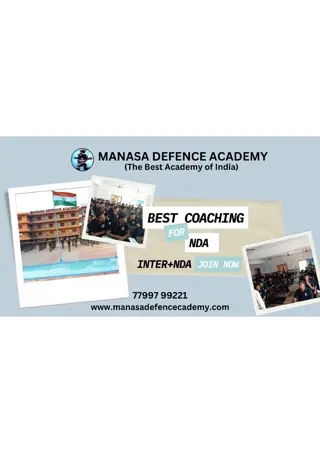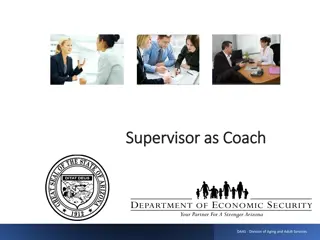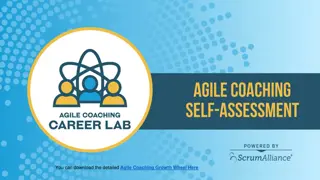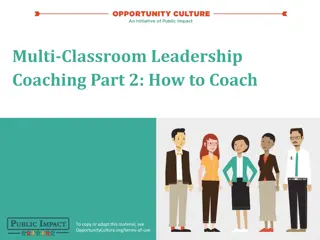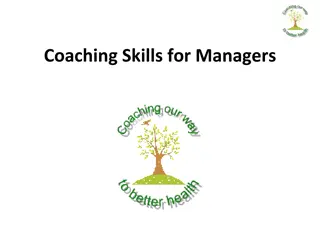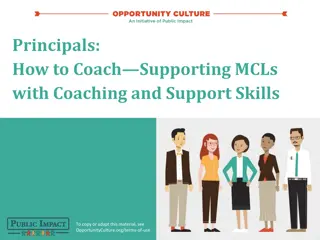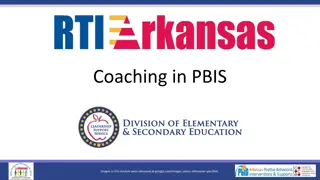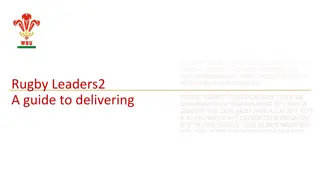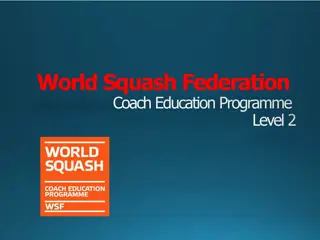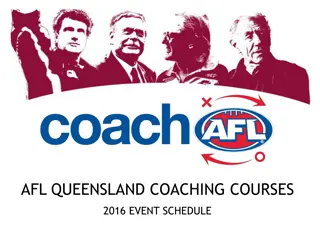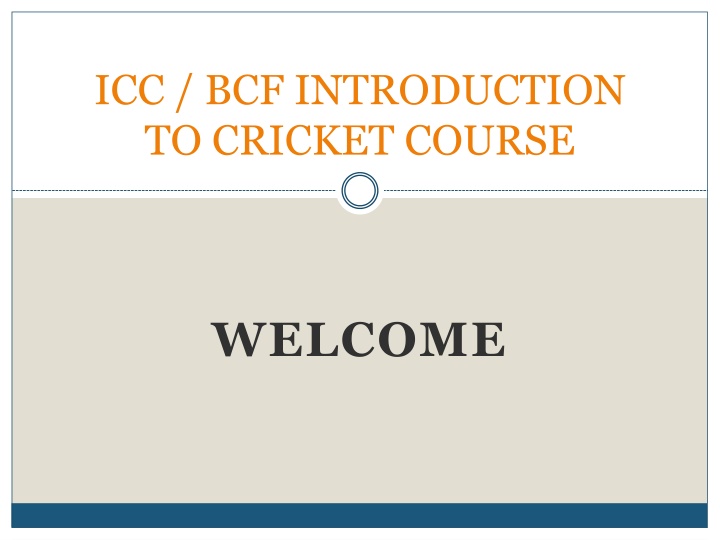
Introduction to Cricket Coaching: Course Overview & Key Elements
Explore the ICC/BCF Introduction to Cricket Coaching course, focusing on principles, coaching pathways, aims, coaching philosophy, key elements, and content for effective coaching in cricket.
Download Presentation

Please find below an Image/Link to download the presentation.
The content on the website is provided AS IS for your information and personal use only. It may not be sold, licensed, or shared on other websites without obtaining consent from the author. If you encounter any issues during the download, it is possible that the publisher has removed the file from their server.
You are allowed to download the files provided on this website for personal or commercial use, subject to the condition that they are used lawfully. All files are the property of their respective owners.
The content on the website is provided AS IS for your information and personal use only. It may not be sold, licensed, or shared on other websites without obtaining consent from the author.
E N D
Presentation Transcript
ICC / BCF INTRODUCTION TO CRICKET COURSE WELCOME
Welcome! Introduction Why do you want to coach? What are your expectations of this course? Any questions?
BCF COACHING PATHWY Introduction to cricket CDW - 4 sessions in NL Coach (UKCC 2) Head Coach (UKCC 3) Master Coach (UKCC 4) Coaching Fellow (UKCC 5) - focus on Group Coaching - GC + more content - Individual & team based - Elite/HP Coaching
Aim of the course? To provide candidates with an introduction to the principles/practice of safe, ethical and effective management and coaching of cricket to adults and young people, as an assistant normally under the supervision of a Level 2 qualified coach This may include: Run warm ups/cool downs Organise small sided games Run small group work Assist the senior coach
What does that mean? At the end of the course you should be able to: Organize and supervise cricket activities Promote working relationships with stakeholders Players, coaches, parents & officials Demonstrate an understanding of basic skills Cricket specific, health & safety, rules & laws Ability to adapt activities and sessions to a variety of different age groups Awareness of further personal development
Coaching Philosophy Provide a fun and safe environment in which people, particularly children, can enjoy their first experience of cricket, gain some success and be motivated to want to go on playing Coaching people not just cricket Helping people to grow and develop Being open and accessible to all
The Coaching Process Key elements? Understand the how to coach and what to coach Run warm up s and cool down s Provide clear instruction and explanation Provide demonstrations Safety comes first!! Be positive!!
What to coach How to coach The Content Provide clear instructions and explanations What is being coached Provide effective demonstrations Rules, technical and tactical skills of cricket Make the session fun The what of throwing, catching, batting, bowling and fielding Keep the session safe Organise groups of children
What helps people learn? Making the coaching sessions fun and enjoyable? L Learner-centered E Enjoyable A Achievable R Rate N Novel make each player feel special sessions fun but purposeful everyone to achieve some success keep rate up don t talk too much new drill or activity every session
Key Coaching Attributes? To Know: To Do: To Be: people/children learning Responsibilities Cricket rules, techniques/tactics Performance factors to plan/organise to explain/give info to demonstrate to observe to provide feedback to use questioning to listen player-centred open-minded committed honest trustworthy caring fair accountable
Assessment Group coaching practice Required skills for assessment - One out of: Catching relay Hit the stumps Lords game FFT drive Run out intercept game Lords game pull shot Non stop/continuous cricket Quick cricket and safe catching Target bowling/cool down
Assessment Demonstration and technical skills Assessment demonstration: Batters set up Bowling from base position Overarm throw Close catching
Warm Up Be easy and quick to set up Gradually increase in intensity Prepare players mentally as well as physically for following session Link with game/session Be fun (varied from session to session) Include mobility exercises and not static stretching (youtube)
Cool down Be a slower paced activity to calm players Give the body chance to recover Reduce the chance of muscle stiffness Give players the chance to reflect on the activity
Introduction of small sided games Reasons: More involvement, games shorter, fulfill make it fun principle, tactical awareness Role of the coach: Encourage, score keeping, safety, create fun/enjoy Continual risk assessment keep it safe bug Motivate players make it fun bug Continual Observation effort levels/activity/involvement Key learning points Reinforcement of instruct and explain Introduction make it fun and keep it safe bug Roles and responsibilities of coach during games
Coaching bugs How to provide demonstrations of key technical skills Use Demonstration bug Setting up and running of group coaching sessions Use Organisation bug
Catching principles Hands together Knees flexed Watch the ball Hands relaxed and ready Give with the ball
Batting principles Set up head still, eyes level, balanced Step & backswing same time as back swing, front shoulder dips, bat tucked in as it goes back Stable base established, begin down swing Shoulders rotate vertical, for straight bat shots and horizontally for cross bat shots Strike and follow through bat swings through line See watch the ball and make correct decision (judge length and line)
Bowling Principles Alignment all body movements aligned towards target Balance- all body movements directed at the target to ensure balance during preparation, delivery and follow through phases Corridor all body movements within a shoulder width corridor and alignment towards target Direct movement towards target Keep the hips and shoulder in line and you will be fine
Sessions Planning Effective session planning involves: Good planning!! Link sessions Demonstration of 4 coaching skills Catering for all abilities by considering differentiation Being flexible Evaluating personal coaching performances
Coaching Styles Tell & Show When the coach needs to be in complete control. Use of demonstrations creates excellent picture Learners tend to be passive a one way process Do we overuse this approach Questioning approach Develops player responsibility Generates and raises awareness Needs to involve incisive questions and requires good listening skills Set up and observe Coach in control but then hands off allowing game/drill to run itself Recognizes that learning can take place without coach having to intervene all the time Helps players problem solve Coach needs to observe well Explanation bug Questioning bug Observation bug Providing feedback bug
How to manage behaviour and establish control? What can have an influence on behavior?: Lack of attention Disruptive behavior Bullying Over excited and noisy
Consider the reasoning? Coach behavior (e.g. voice, positioning, clarity of instruction) Task difficulty and need for differentiation Interest and motivation Fatigue, hunger, thirst
Key implications for Coaching Modify equipment, rules and design appropriate games/activities to encourage success Praise and encouragement Maximum active participation Aid learning through emphasizing basic tactics and strategies in modified games Focus on effort rather than outcome Emphasize importance of ethics and fair play Wide range of activities targeting key movement skills

